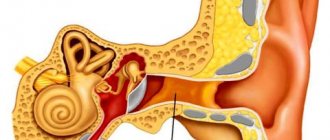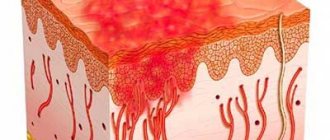January 24, 2012
The cause of many health problems is usually sought in hormonal imbalances. What are hormones and how do they work?
Hormones are special chemical messengers that regulate the functioning of the body. They are secreted by endocrine glands and travel through the bloodstream, stimulating certain cells. The term “hormone” itself comes from the Greek word “to excite.” This name accurately reflects the functions of hormones as catalysts for chemical processes.
at the cellular level.
Endocrine system and hormones: what is it?
The endocrine system is a whole complex of interconnected organs and endocrine glands that synthesize hormones. They, under the guidance of the nervous system, regulate the course of a huge number of biochemical transformations occurring in the body and the functioning of internal organs through the same hormones.
Hormones are biologically active substances that are synthesized by the body in small quantities and are responsible for transmitting information to other organs without changing their nature and without directly entering into various biochemical transformations.
Elements of the endocrine system are both the endocrine glands themselves (pancreas, thyroid, parathyroid glands), and individual organs, as well as parts of the brain, including the pituitary gland, hypothalamus, pineal gland, thymus, adrenal glands, gonads (testes in men and ovaries in women) . Even adipose tissue is a hormone-producing organ. In addition, endocrine cells are found in a number of other organs, including the heart, kidneys, etc.
Each of them is responsible for the production of a specific hormone, which is released into the blood and delivered directly to the target organs and tissues, starting or stopping the course of a particular process. Thanks to this, it not only ensures the fulfillment of processes important for life, but also the body’s ability to sensitively adapt to changes in the conditions of the internal and external environment, to grow and develop.
The interaction of hormones with tissues occurs mainly according to the feedback principle. That is, the hormone synthesized by the endocrine gland is delivered to target cells, triggers a certain process, which leads to the production of another hormone by another gland, which affects the source of production of the first, letting us know that the desired process has been completed and thereby inhibiting its synthesis. Thus, all hormones and, accordingly, endocrine organs are closely interconnected and are sensitive to changes in each other’s work. Therefore, when disturbances occur in one of the organs of the endocrine system, the entire body inevitably suffers.
Thus, the balance of hormones is very important for the body, but it can be disrupted due to the action of various factors, including:
- stressful situations;
- chronic lack of sleep;
- weakened immunity;
- smoking and alcohol abuse;
- irrational use of medicines;
- infection with helminths and other parasites;
- some diseases.
Unfortunately, every person can encounter such factors, since it is almost impossible to avoid them in modern life. Therefore, hormonal imbalances are extremely common today, which leads to unfavorable chain changes in the functioning of the body, disruption of many metabolic processes and the development of a wide variety of diseases, the complications of which can even lead to fatal consequences. Therefore, any changes in hormonal levels require medication correction.
However, the male body is more stable in terms of maintaining normal hormonal levels. In women, it can fluctuate due to physiological changes, in particular during pregnancy, during breastfeeding and during menopause. In addition, female hormonal levels regularly change during each menstrual cycle, which explains the fact that it is necessary to take tests for female sex hormones strictly on certain days of the cycle. Otherwise, the data obtained may not be informative.
In order to avoid the development of various diseases caused by changes in hormonal levels, it is important to correct them in a timely manner, including during physiological changes caused by menopause, since estrogen deficiency increases the risk of developing not only diseases of the genital organs, but also oncology.
Today, more than 60 different hormones are known, including sex hormones. Female sex hormones are called estrogens, male hormones are called androgens. However, this gradation is rather arbitrary, since both estrogens and androgens are synthesized in the female body, just like in the male body. Moreover, androgens act as the basis for the synthesis of estrogens in women and play an important role in maintaining homeostasis. Let's take a closer look at the organs of the endocrine system and their main hormones.
GMO
GMO means “genetically modified organism”, i.e. an animal or plant whose DNA (a kind of cellular blueprint) has been altered without the use of natural methods of reproduction. Individual genes are transferred from one organism to another. This allows crops to be grown that have traits such as resistance to insect damage and herbicides. For example, in the case of genetically modified corn, genes from a bacterium that is resistant to herbicides are introduced into the plant. As a result, corn also becomes resistant to herbicides. Monsanto, a leading company producing genetically modified seeds, also sells the herbicide Roundup, which contains a chemical called glyphosate. Many GMOs, such as soy, corn, beet sugar, canola and alfalfa, are engineered to be resistant to Roundup. These patented varieties of plants are known as Roundup Ready because they allow farmers to avoid retaliation for spraying herbicide because the chemical kills weeds without killing crops.
Monsanto states that people in the modern world have consumed "trillions of genetically modified foods" without any harm to their health. However, there were no human surveys, only short-term (three-month) animal studies, and the lion's share of these studies were carried out by Monsanto itself. A longer independent animal study (conducted by a French scientist named Gilles-Eric Séralini) found some serious negative effects, such as causing tumors, organ failure, stomach damage, liver damage, kidney damage, allergic reactions and more. Unfortunately, this study was retracted, which almost never happens. This shows how powerful Monsanto's influence is. Séralini's team reported that 50 percent of male and 70 percent of female rats died prematurely, compared with 30 percent and 20 percent in the control group. Monsanto has great political clout, which it has used to change product labeling laws - laws that now prevent us from knowing whether our food contains genetically modified ingredients. The only way to control this is to make sure you are consuming organic foods or foods that are labeled “non-GMO.” But you can be sure that the vast majority of soy and corn are genetically modified. Avoid GMOs if at all possible, because we are all being experimented on and, unfortunately, the truth about the harm done will come out years after the companies have made their billions.
Foods That Can Counter Fat-Building Hormone
One of the goals of the eating plan, which I explain later in the book, is to reduce the amount of chemicals in your food that mimic estrogen (the fat-building hormone). Certain foods increase estrogen levels, while others decrease them. There is a group of foods that are antiestrogens and antitoxins - cruciferous: cabbage, broccoli, cauliflower, radishes, kale, Brussels sprouts, etc. Cruciferous comes from the Latin word “crux”, which means “cross”, since the flowers of these vegetables are shaped like a cross. If you need to combat chemicals in your body, it makes sense to eat as many of these vegetables as possible or take them as a dietary supplement.
To make a natural cleaning liquid for washing vegetables, mix 1/3 cup of apple cider vinegar with about 4 quarts of water. This mixture will help wash away the chemicals on the surface of the vegetables, although it won't remove the chemicals inside. Also, break off and discard the outer leaves of leafy vegetables. Remove fat from meat and skin from chicken and fish if commercial. Also, if you have to choose between meat and fish in the store, it’s better to go with fish. It takes 60 kilograms of feed and hay (which contains pesticides) to produce 1 kg of edible beef, not to mention the growth hormones given to cattle throughout their lives. To produce 1 kg of edible fish, only 1 kg of feed is required, therefore there are fewer hormone disrupting chemicals.
Coffee
Someone who drinks 2 cups of coffee a day buys approximately 8 kg of coffee beans per year, i.e. total harvest from 12 coffee trees. To maintain the productivity of these trees, coffee farmers apply 5-plus kilograms of fertilizers and pesticides every year. Although my program will recommend not drinking coffee, I recommend drinking organic coffee during the transition period. Coffee also contains caffeine and damages your adrenal glands, which can prevent you from burning fat.
Organic means without the use of chemical fertilizers, pesticides, fungicides, herbicides and insecticides. When you read labels, make sure they say “organic” and not “natural.” It's not the same thing. “Natural,” in legal terminology, simply means that no chemicals were used in the processing of the product. “Natural” can imply many different qualities, but does not mean free from pesticides or insecticides. I'm not saying you should start eating 100% organic tomorrow. However, I would recommend eating at least 50% organic foods. You’re not going to go to your friend’s house for lunch right now and say: “You know, I read an article on the Internet, and uh….. I noticed that the food you’re treating me to is full of pesticides, insecticides, herbicides, heavy metals, antibiotics and growth hormones. And this tuna contains mercury. So I brought some food with me.” You shouldn’t do this, it’s not accepted in society, you simply won’t be invited another time. Maybe that's why no one invites me to dinner anymore.
Fat Burning Hormones and Fat Storage Hormones To recognize the hormones that trigger the fat burning process that results in weight loss, it's a good idea to know what they are. Below you will find information not only about fat-burning hormones, but also about hormones that help store fat, because you want to avoid their activation.
Pituitary gland and hypothalamus
The hypothalamus is a kind of connecting link between the endocrine and nervous systems, since it simultaneously belongs to both. It is he who controls and combines endocrine regulatory mechanisms with nervous ones. In it, in response to signals received from the central and autonomic nervous system, so-called neurohormones are synthesized, which are responsible for regulating the production of their own hormones by other endocrine glands. It also controls the work of the pituitary gland, which is the central organ of the endocrine system and has the greatest influence on the activity of its other components.
It is the hypothalamus that is able to give the pituitary gland the command to increase or slow down the production of all other hormones in the body.
Adrenocorticotropic hormone
Adrenocorticotropic hormone (ACTH) is a peptide hormone that is synthesized by the anterior pituitary gland under the influence of neurohormones produced by the hypothalamus. It is responsible for initiating the synthesis of cortisol in the adrenal glands, as well as androgens, i.e. male sex hormones. In this case, adrenocorticotropic hormone, which is also called corticotropin, helps to increase the sensitivity of peripheral tissues to the action of corticosteroids. To a lesser extent, it is responsible for the occurrence of biochemical processes responsible for the formation of bone tissue in osteoblasts.
ACTH levels can fluctuate under the influence of stress, physical activity, and also change during sleep, pregnancy and depend on the phase of the menstrual cycle.
The normal level of ACTH in the blood ranges from 0 to 46 pcs/ml. The physiological peak of its production occurs at 6-8 hours, and the minimum at 18-23 hours. Its concentration may increase when:
- primary adrenal insufficiency;
- Nelson's syndrome;
- congenital adrenal hyperplasia;
- paraneoplastic syndrome;
- syndrome of ectopic ACTH production, etc.
The reason for the increase in ACTH levels in the blood may be taking medications containing calcium gluconate, insulin, vasopressin, estrogens, corticosteroids, spironolactone, lithium, methopriron, ethyl alcohol.
If increased ACTH production persists for a long time, an increase in the size of the adrenal glands may be observed, as well as the accumulation of cholesterol, ascorbic and pantothenic acid in their cortex, which will lead to its proliferation.
A decrease in ACTH levels may be due to:
- secondary adrenal insufficiency;
- adrenal cortex cancer;
- administration of corticosteroids;
- the presence of a tumor that produces cortisol.
Vasopressin (antidiuretic hormone)
Vasopressin is a peptide hormone that is synthesized by the posterior lobe of the pituitary gland. Its main task is to narrow blood vessels, which is one of the mechanisms for regulating blood pressure levels, namely, contributing to its increase. Vasopressin is also responsible for the reabsorption of water in the kidneys, which leads to a decrease in the volume of urine excreted and the maintenance of normal water-salt metabolism. Thanks to this property, vasopressin has earned its second name - antidiuretic hormone.
With a deficiency of vasopressin, diabetes insipidus may develop.
A growth hormone
Somatotropin or growth hormone is produced by the pituitary gland and is the main regulator of the process of human growth and development. Maintaining its production at the proper level is most important for children from birth to puberty, since bone growth largely depends on it. In adults, it persists and is responsible for regulating bone density, maintaining muscle mass, and is also involved in the metabolism of fatty acids.
The highest level of somatotropin in the blood is usually observed at night. Normally, in men its concentration is 0-3 ng/ml, in women – 0-8 ng/ml.
Lack of growth hormone leads to a delay in the physical development of children, which can be caused by tumors and injuries of the pituitary gland, meningitis, or a number of congenital pathologies. In adults, growth hormone deficiency can lead to increased bone fragility, decreased muscle volume, and decreased lipid concentrations.
Excess somatotropin is observed in pituitary tumors, which are usually benign in nature. This can cause gigantism, the formation of coarse facial features, weakness, delayed sexual development, and in adults – acromegaly.
Luteinizing hormone
Luteinizing hormone (LH) is a gonadotropic hormone of the anterior pituitary gland that activates the production of sex hormones in both women and men. It stimulates the synthesis of estrogen and progesterone, and also provokes the rupture of a mature follicle in the ovary and the onset of ovulation. At the same time, LH is closely interrelated with estrogens, therefore, when their levels fluctuate, changes in LH concentration are also possible. In men, LH affects the cells of the testes, stimulating the production of testosterone in them.
An increase in the synthesis of luteinizing hormone is possible when:
- pathologies of the pituitary gland, including the formation of malignant tumors;
- polycystic ovary syndrome;
- endometriosis;
- urological pathologies;
- testicular tumors.
LH levels in women directly depend on the phase of the menstrual cycle. Normally, it increases sharply with the onset of menopause.
Symptoms of excess LH may include frequent headaches, shortness of breath, weakness, menstrual irregularities and signs of excess estrogen.
Hormone deficiency is observed when the pituitary gland is malfunctioning, severe underweight up to anorexia, and severe stress. In such situations, gastrointestinal dysfunction and weakness may occur.
Follicle stimulating hormone
Follicle-stimulating hormone or FSH is a glycoprotein hormone synthesized in the anterior pituitary gland and is directly involved in the regulation of the activity of the gonads. Its production is activated by a decrease in the concentration of sex hormones, and inhibition is activated by an increase in their level. Normally, FSH levels increase sharply before the onset of puberty with the development of secondary sexual characteristics.
With the establishment of the menstrual cycle in women, the hormone activates the process of maturation of follicles in the ovaries and prepares them for the action of LH, and also stimulates the synthesis of estrogens, i.e. interacts with them according to the feedback principle. In men, FSH influences the development of seminiferous tubules and an increase in testosterone levels, and also activates the formation and maturation of sperm in the testicles.
Excess FSH occurs with kidney pathologies, pituitary tumors, alcoholism, primary testicular failure, hypogonadism, and endometriosis. This is accompanied in women by breakthrough uterine bleeding in the absence of a direct dependence on the phase of the menstrual cycle, or by the absence of menstruation, and frequent headaches.
FSH deficiency may be present in polycystic ovary syndrome, pathologies of the hypothalamic-pituitary system, exhaustion, anorexia, and dwarfism. In such situations, the menstrual cycle is disrupted, infectious or chronic diseases of the genital organs arise, and infertility may occur.
Oxytocin
Oxytocin is a neuropeptide that accumulates in the posterior lobe of the pituitary gland and is responsible for the contraction of the muscles of the uterus and mammary ducts, which becomes especially important during childbirth and subsequent breastfeeding. In addition, oxytocin is also called the hormone of trust, since with an increase in its content in the blood, the level of empathy and affection increases.
Prolactin
Prolactin is another pituitary hormone that stimulates the normal development of the mammary glands, milk production during pregnancy, and is also responsible for maintaining lactation after childbirth. In addition, it regulates the synthesis of progesterone and inhibits the production of FSH, which ensures the maintenance of the regularity of the menstrual cycle.
High concentrations of prolactin are characteristic of:
- hypothyroidism;
- formation of tumors of the pituitary gland and hypothalamus;
- chronic renal failure;
- polycystic ovary syndrome;
- hypogonadism;
- severe stress.
This leads to the development of infertility, amenorrhea (lack of menstruation) and galactorrhea (formation of breast milk outside of pregnancy and lactation). This may be accompanied by chest discomfort and headaches.
Normally, an increased level of prolactin is observed after childbirth while breastfeeding continues, which has an anovulatory effect on the ovaries and reduces the likelihood of pregnancy.
Hormone deficiency occurs when the pituitary gland is insufficient, which is typical for:
- Sheehan's syndrome (necrosis of the pituitary gland caused by excessive blood loss during childbirth);
- injuries, surgeries, radiation therapy affecting the pituitary gland;
- taking antiepileptic drugs, some corticosteroids, dopaminergic drugs, etc.
With a decrease in prolactin concentration, increased sweating and severe thirst are observed. If a woman has Sheehan syndrome, lactation stops, followed by a gradual decrease in the size of the mammary glands, weight loss, menstrual irregularities, and decreased libido.
Thyroid-stimulating hormone
Thyroid-stimulating hormone, or TSH, is primarily responsible for producing thyroid hormones, which are responsible for maintaining normal energy levels. Therefore, when its production changes, the synthesis of thyroid hormones is immediately disrupted, which leads to the development of corresponding diseases. The causes of impaired TSH production by the pituitary gland are pathologies of the hypothalamus, as well as the thyroid gland. Therefore, increased concentrations of TSH in the blood are found when:
- hypothyroidism;
- pituitary tumors;
- preeclampsia;
- mental illness;
- adrenal insufficiency.
TSH deficiency is characteristic of diffuse toxic goiter, Plummer's disease, hyperthyroidism in pregnancy, as well as autoimmune thyroiditis and cachexia.
What should be the correct estrogen concentration?
It all depends on the phase of the menstrual cycle, as well as the stage of development, age and health of the woman. In different periods, estrogen levels are different.
Estradiol values:
- follicular phase: 30–120 ng/l (110–440 pmol/l),
- ovulation: 130–370 ng/L (477–1358 pmol/L),
- luteal phase: 70-250 ng/l (257-917 pmol/l),
- postmenopausal period: <10 ng/l.
Estrone:
- in the reproductive period 17-200 ng/l,
- during the postmenopausal period 7–40 ng/l.
Estriol: less than 80 ng/l.
Estrogen concentrations are checked in a diagnostic laboratory. A blood sample is analyzed. You must come for the examination in the morning on an empty stomach. It should also be remembered that the values in the test results should be directly compared with the standards indicated on them, and the correct interpretation should be left to the discretion of the doctor.
Thyroid
The thyroid gland is a small endocrine gland located on the front surface of the neck and consisting of two halves connected by an isthmus. It produces the same thyroid hormones that have a close relationship with TSH.
Thyroid hormones are biologically active substances whose molecules contain iodine. These are thyroxine (T4) and triiodothyronine (T3), which regulate the processes of growth and development of the body, and are also involved in the regulation of metabolic rate. They increase the tissue's need for oxygen, and also contribute to an increase in blood pressure, frequency and strength of heart contractions.
A person’s energy, psychological energy and the speed of cognitive processes depend on thyroid hormones. They also promote the formation of glucose in the liver and its use by cells, while they suppress the accumulation of glycogen. In addition, thyroid hormones promote faster decomposition of fat and prevent the formation of new ones.
Pancreas
The pancreas is located in the abdominal cavity and is not only an endocrine gland, but also an organ of the digestive system. But its hormones play a particularly large role in the regulation of protein, fat and especially carbohydrate metabolism. These include:
- Glucagon is a peptide hormone responsible for increasing blood sugar levels due to the entry of glucose into the blood as a result of the breakdown of glycogen. It also stimulates insulin production and increases blood pressure, heart rate and strength. In high doses, it provokes intestinal relaxation. But the hormone is most important for ensuring the ability to mobilize the body in stressful situations by providing cells with a source of energy - glucose.
- Insulin is responsible for reducing blood glucose levels, which makes it one of the most important hormones in regulating the metabolism of carbohydrates, as well as proteins and lipids. With a deficiency of insulin or impaired cell sensitivity to it, diabetes mellitus develops.
Adrenal glands
The adrenal glands are paired organs of the endocrine system located directly above the kidneys. The main hormones synthesized by them are:
- Adrenaline is a fear hormone that is synthesized when a person finds himself in a stressful situation and also feels a threat to life. It provides instant mobilization of the body, which leads to a short-term increase in physical capabilities.
- Aldosterone - is involved in the regulation of water-salt metabolism, as it promotes the retention of sodium and water, but stimulates the excretion of potassium.
- Corticosteroids are represented by cortisol, cortisone and corticosterone. All of them have a powerful anti-inflammatory effect and can affect the entire body. They also take part in maintaining normal blood sugar levels, due to its breakdown and storage by the body in the liver in the form of glycogen, as well as muscle tone and blood pressure.
The functioning of the adrenal glands is controlled by the pituitary gland and hypothalamus.
Sex hormones
Sex hormones of all types are produced in both men and women. But in men, androgens predominate, and in women, estrogens predominate. They are synthesized partially in the adrenal glands, but mainly in the ovaries and testicles.
Progesterone
Progesterone is synthesized by the corpus luteum formed after the rupture of the follicle and the onset of ovulation. This is a temporary endocrine gland that gradually dissolves. Progesterone is responsible for preparing the endometrium (the inner layer of the uterus) for the attachment of a fertilized egg. It is also involved in preparing the mammary glands to produce breast milk.
The causes of increased progesterone levels are corpus luteum cysts, tumors of the ovaries and uterus, dysfunction of the adrenal glands, and chronic renal failure. With excess progesterone, the following are observed:
- uterine bleeding;
- discomfort in the lateral part of the lower abdomen, mammary glands;
- menstrual irregularities;
- increased nervousness, tendency to depression;
- fast fatiguability;
- sudden weight gain.
Progesterone deficiency is observed in pathologies of the pituitary gland that provoke a decrease in LH, uterine bleeding, and salpingo-oophoritis. In such situations, menstruation is delayed or stopped. At the same time, there is an increase in sexual desire.
Estrogens
Estrogens are synthesized in the ovaries in women and in the testicles in men. In women, they control the development of the female genital organs and secondary sexual characteristics, and in men, they are responsible for regulating the activity of the prostate and testicles. In addition, estrogens are involved in fat and mineral metabolism.
Excess estrogen in the body occurs due to obesity, xenoestrogens entering the body, thyroid dysfunction, and hypothyroidism. An increase in estrogen levels is accompanied by:
- increased sensitivity of the mammary glands;
- rapid weight gain;
- MC violations;
- hair loss;
- mood swings;
- bowel dysfunction;
- constant fatigue.
Estrogen deficiency in the body can occur with:
- diseases of the internal genital organs;
- long-term use of GnRH antagonists;
- menopause;
- after chemotherapy.
If there is not enough estrogen produced in the body, this can lead to male-pattern hair growth, deepening of the voice, as well as menstrual irregularities up to the absence of menstruation. With estrogen deficiency, there is a decrease in performance, weakness, sleep disturbances, irritability occurs and sexual desire disappears.
Testosterone
Testosterone is a male sex hormone responsible for the formation of secondary sexual characteristics and reproductive function. In men, it is synthesized in the testicles, which is controlled by LH, and in small quantities in the adrenal glands. In women, testosterone is produced by the adrenal glands and in small quantities by the ovaries.
Testosterone levels are influenced by vitamin D, which has recently been discovered to also be a hormone and antioxidant. But a decrease in its concentration is most often caused by pathologies of the pituitary gland and hypothalamus, testicular injuries, infertility or underdevelopment of the testicles. Excess testosterone may indicate tumors in the testicles or adrenal glands, hyperthyroidism, or polycystic ovary syndrome.
There are many other hormones, each of which performs its own function in the body and is important for it. This includes melatonin, which is responsible for normal sleep, and renin and angiotensin, which provide control over blood pressure, and many others.
You worry too early - it will get even worse!
Scientists are conducting important research into the effects of toxins called “endocrine disruptors” on human life and wildlife[2]. Examples of endocrine disruptors:
- pesticides (pest killers)
- insecticides (insect killers)
- herbicides (weed killers)
- fungicides (fungus killers)
- plastic
- solvents
- heavy metals
The suffix “-cid” comes from the Latin word “caedere,” which means “to kill.” Research has found that 90-95% of all pesticide residues are present in meat and dairy products.
These chemicals act as if they were hormones. They have the ability to interfere with hormonal connections. If hormones are like a key and cellular receptors are like a keyhole, then endocrine disruptors can enter that keyhole and interfere with the hormones doing their job. Over time, as a person ages and exposure to chemicals accumulates, the receptors that are supposed to receive hormones become clogged, and hormonal communication decreases. This explains why hormones lose effectiveness and become resistant and intractable. In other words, the key (hormone) no longer fits into the keyhole (receptor). Another thing about endocrine disruptors is that even a tiny amount can damage the hormone. It won't take much time. Schools, restaurants, golf courses, yards, food, etc. are all littered with chemicals that masquerade as estrogen. These toxins usually accumulate in one or two organs. Between 1938 and 1970, doctors prescribed the artificial estrogen substitute diethylstilbestrol to millions of pregnant women to prevent miscarriage. This continued for more than 30 years until it was discovered that diethylstilbestrol causes miscarriages, and is also a cause of rare cervical cancer and other health problems. One course of diethylstilbestrol was equivalent to taking more than 5,000 birth control pills. It was also the main growth hormone given to animals at the time.
DDT, another chemical masquerading as hormones, was found in the fatty tissue of more than 99% of children (May 22, 2004), despite its ban in 1969. Where did he come from? It is allowed to be sold in third world countries such as Mexico and Morocco. Can you guess in one try where fruits and vegetables come from during the winter months? These endocrine disruptors are also carcinogens. If you read any textbook on toxicology (the study of poisons), you will learn that these terms are synonymous. Carcinogens are substances that can cause cancer. The word “cancer” has an interesting history. The cancer first discovered by the Greek physician Hippocartus was breast cancer, and the blood vessels that radiated around the breasts looked like the claws of a cancer, hence the Greek name "karkinos", which means "cancer". The reason this information is probably not widely shared is that it is difficult to prove. Carcinogens typically have a latency period of 30 years or more from the time they enter the body before the cancer or tumor is detected. That's why it took 30 years for the effect to show up in the daughters of those women who took diethylstilbestrol. These chemicals insidiously accumulate in certain tissues over the years, and as they compete with your hormones, the hormonal impact becomes less and less, and the hormones cannot get involved in doing their job.










